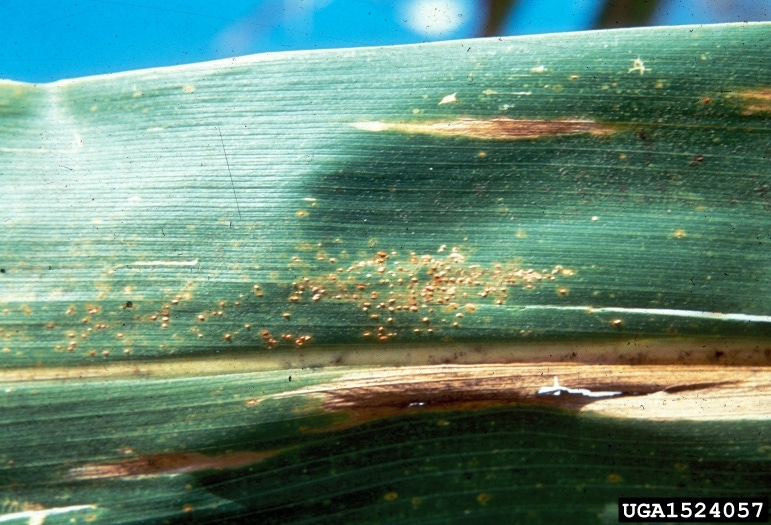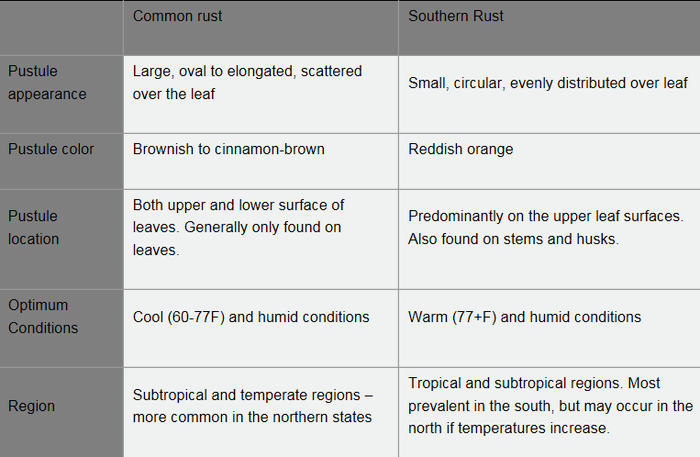July 18, 2017

Ohio corn producers are reporting more rust on corn this year, and are concerned that it might be southern rust, the rarer but more damaging of the two major rust diseases that affect corn in state. Based on the fact that they both produce rusty looking pustules on the leaves, producers may actually be confusing common rust with southern rust, especially when they are not occurring side-by-side on the same leaf.
The table below provides some key differences between the two based on the characteristics of visual symptoms and conditions favorable for development:

Fungicides do equally well against both diseases, but are rarely ever needed for common rust on hybrid corn. Scout fields and observe the weather before making an application. As it becomes warm and dry, typical of summers in Ohio, the development and spread of common rust slow down considerably or stop. For southern rust, however, fungicides may be warranted and economically beneficial if timed correctly (as soon as the first few pustules are observed). The information on IPIPE (http://scr.ipmpipe.org/cgi-bin/sbr/public.cgi) can be used as a guide for timing fungicide applications based on the occurrence and the movement of southern rust.
Since common rust is rarely ever an economic concern in this part of the world, no extensive research has been done to determine damage, fungicide application, or any other thresholds in Ohio. If the hybrid is susceptible and conditions seem favorable, you can use the guidelines below for gray leaf spot (GLS) and northern corn leaf blight (NCLB) as a guide, with the understanding that they were not developed for rust. The biology of common and southern rust is vastly different from that of GLS, NCLB, and Eye Spot. Scout fields just prior to tassel emergence, and examine plants for disease symptoms. A foliar fungicide application should be considered under the following situations:
1.Susceptible hybrids: If disease symptoms are present on the third leaf below the ear or higher on 50% of the plants examined.
2.Intermediate hybrids: If disease symptoms are present on the third leaf below the ear or higher on 50% of the plants examined, AND the field is in an area with a history of foliar disease problems, and growing and weather conditions favor the disease in question.
3.Resistant hybrids: Fungicide applications generally are not recommended.
Note: These guidelines are targeted toward diseases caused by residue-borne pathogens such as gray leaf spot and northern leaf blight, and NOT for diseases caused by air-borne pathogens which have spores that can travel great distances such as common rust and southern rust.
About the Author(s)
You May Also Like




